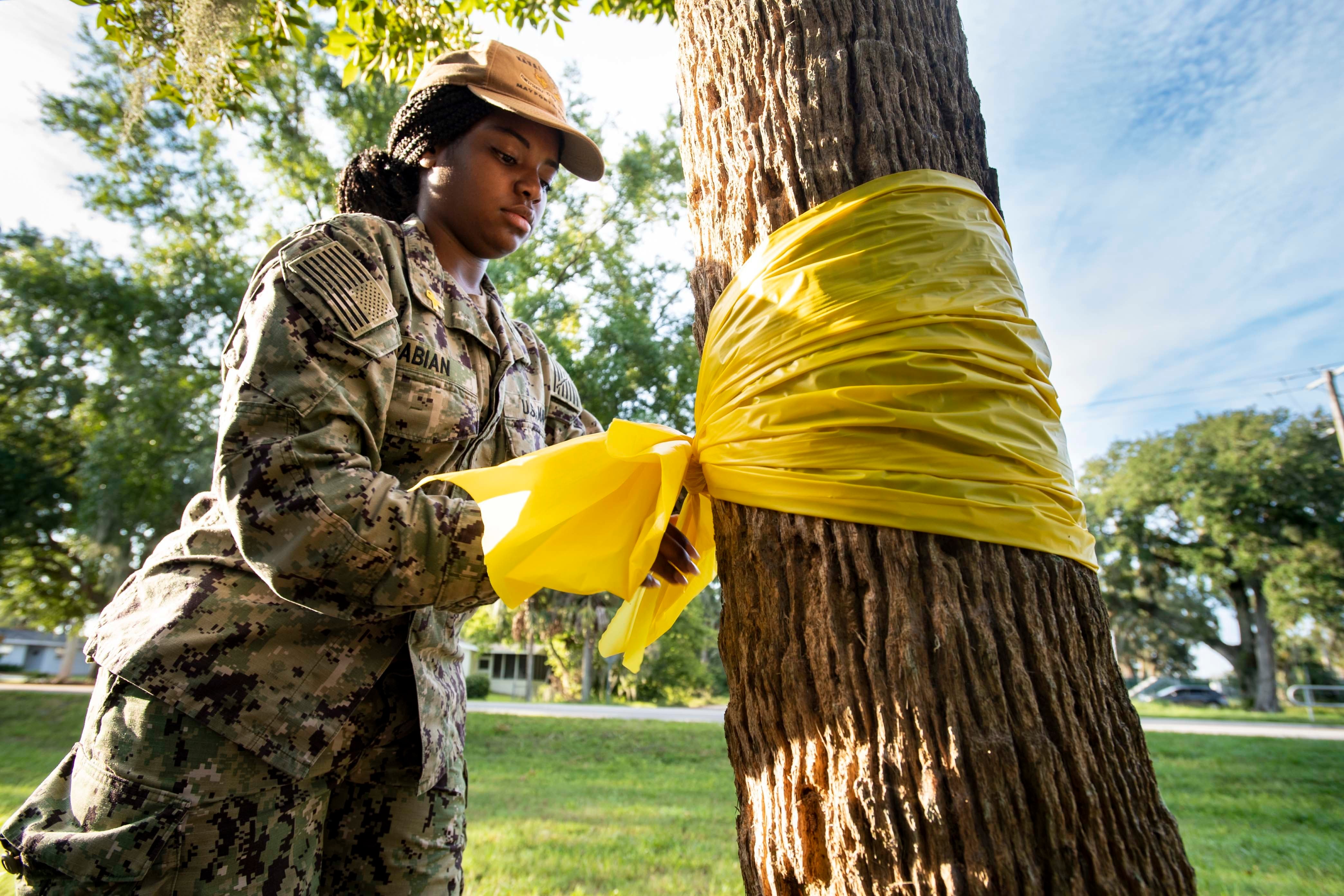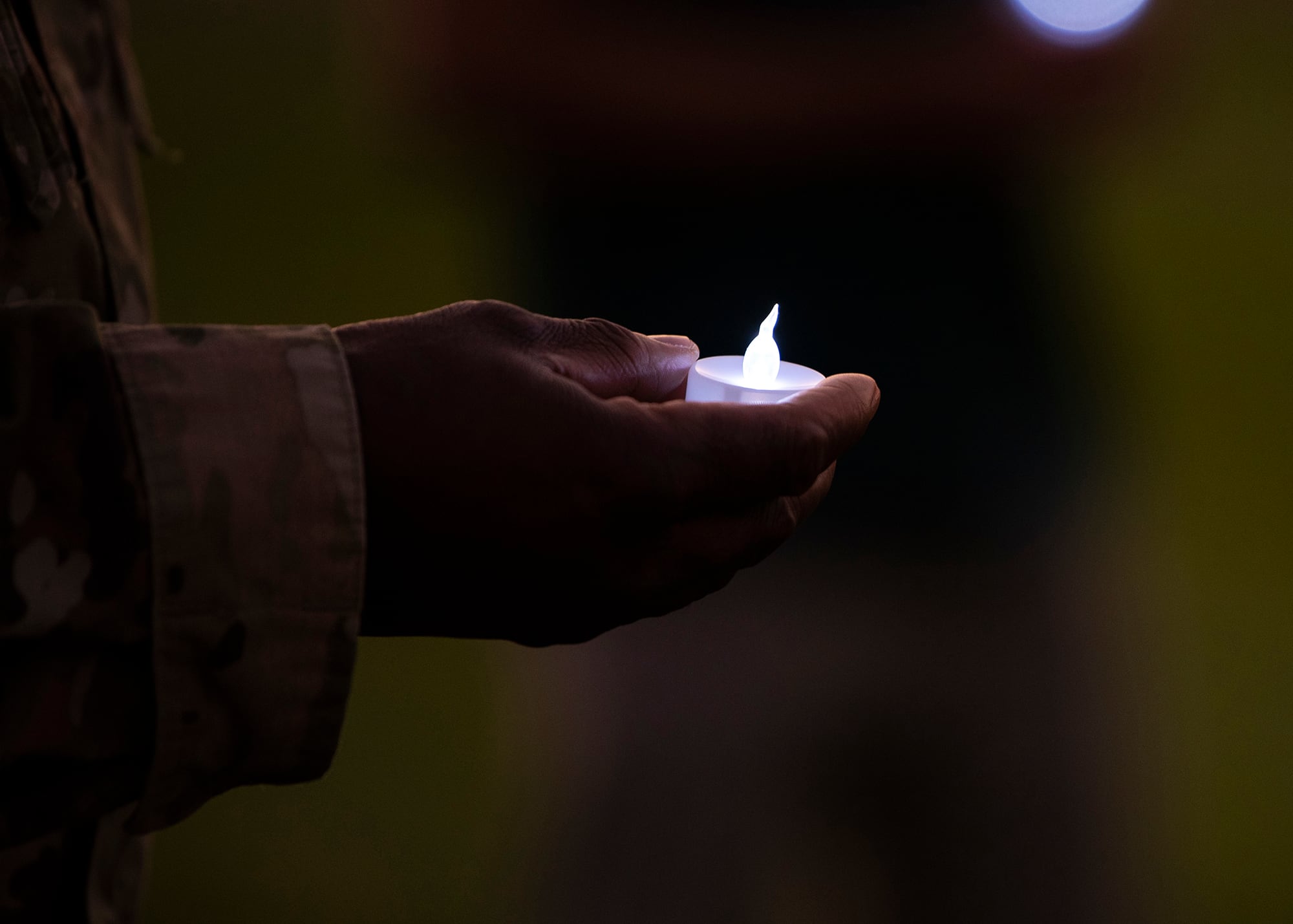The Air Force avoided a spike in suicides among uniformed personnel amid the pandemic and isolation of 2020, but has not managed to bring down the number of deaths despite a push to address mental health.
Eighty-one active-duty personnel, 16 Air National Guard members and 12 Air Force Reserve personnel killed themselves in calendar 2020, according to Pentagon data. Those figures include Space Force guardians as well.
That totals 109 servicemember deaths in the Department of the Air Force last year — the same as in 2019, when the service told units to briefly pause operations to take a closer look at the problem. The past two years each had nearly 30 more suicides than in 2018, the highest level of suicides since 2015.
Data and studies previously published by the Pentagon and Air Force show that prior to 2019, when 84 active-duty airmen took their own lives, the 64 active-duty suicides in 2015 had been the highest total for the Air Force this century, the Associated Press previously reported. A 2009 Air Force study said active-duty suicides between 1990 and 2004 averaged 42 a year and never exceeded 62.
Numbers for 2020 won’t be finalized until the Pentagon releases its formal report this fall, after death investigations have run their course.
“The last two years have not been the best for the United States Air Force,” Air Force Chief of Staff Gen. Charles “CQ” Brown said during a Monday town hall. “The goal is to actually get it as close to zero as we can, and get those who are having challenges the help they need before they make the ultimate decision that can’t be reversed.”
RELATED

The Air Force declined to release suicide data for its subordinate organizations or bases, saying the service “routinely conducts suicide analysis boards and analysis of our suicide data to determine trends in our suicide death data.”
“We utilize this data in combination with other risk and protective factor information to target resilience and prevention efforts such as True North,” a program that embeds mental health providers and religious support staff in high-risk groups, said Maj. Holly Hess, an Air Force spokeswoman.
As the coronavirus pandemic upended daily life around the world, the Air Force worried that social distancing requirements, complications for family life and military travel, and other stressors would drive the suicide trend line higher. It turned to telemedicine to offer members a remote source of help.
“The usage of virtual health increased more than 1,000 percent since the onset of the pandemic,” Hess said. “In January 2021, 58 percent of all mental health encounters in the Military Treatment Facility were face to face, and 42 percent were telehealth.”
In an April 1 release, the service said it also distributed more than 200,000 gun locks in 2020 as part of a strategy to slow the time it takes to access a potentially fatal weapon. More than 70 percent of Air Force suicides since 2015 have involved personal firearms, according to the release. Airmen also undergo an annual training in suicide intervention, so peers can help if a unit commander is unresponsive to someone’s needs.
Sending someone to a counselor isn’t a replacement for looking out for each other in the first place, leaders said.
“We’ve got to develop our leaders so that the ‘easy button’ isn’t to direct their folks to necessarily go to mental health,” Chief Master Sergeant of the Air Force JoAnne Bass said during the town hall. “How many of us as supervisors, as leaders, actually care enough to find out what is going on with our member or our teammate or our wingman before they even go there? Not everybody needs to go to mental health.”
Brown suggested there is more opportunity to tailor mental health services to a person’s needs, while stopping short of creating a different program for each Air Force career field.
“One of our challenges right now is having the capacity and the responsiveness for mental health,” he said.
It’s harder to connect with colleagues while working from home, or when interaction outside of work is discouraged because of the pandemic, Brown said. That puts the onus on commanders to get to know their airmen so they can learn to ascertain how someone’s day is going.
RELATED

Critics say commanders don’t take mental health and suicide issues seriously enough, and that underlying issues in military life that are causing emotional distress aren’t being resolved. Service officials are also battling claims that seeking psychological treatment could potentially end an airman’s career.
“Mental health treatment generally has a minimal, if any, impact on careers, especially if treatment occurs early,” Hess said. “Stigma is a large reason behind the effort to embed mental health providers and religious support teams within specific units as part of the True North program. Early results show embedding these members decreases stigma.”
A recent meeting on emotional resilience explored how the Air Force might further assist those who are overwhelmed, anxious, depressed, or dealing with post-traumatic stress disorder. Bass said she is awaiting the final briefing on ideas to bolster support services for airmen and their families.
A task force is crafting a five-year strategy for reforming support services and plans to issue recommendations later this year, the Air Force said Feb. 11.
USAF wants to create a baseline set of services available at every installation, and fix policies within both the Air Force and Defense Department that might deter people from seeking help.
“We can do a lot of awareness programs and the like, but it goes back to these people skills of actually getting to know people and getting a sense [of] when someone’s not themselves,” Brown said. “It’s kind of hard to know they’re not themselves if you don’t know them in the first place. That’s something we all have to work on.”
Rachel Cohen is the editor of Air Force Times. She joined the publication as its senior reporter in March 2021. Her work has appeared in the Washington Post, the Frederick News-Post (Md.), Air and Space Forces Magazine, Inside Defense, Inside Health Policy and elsewhere.




